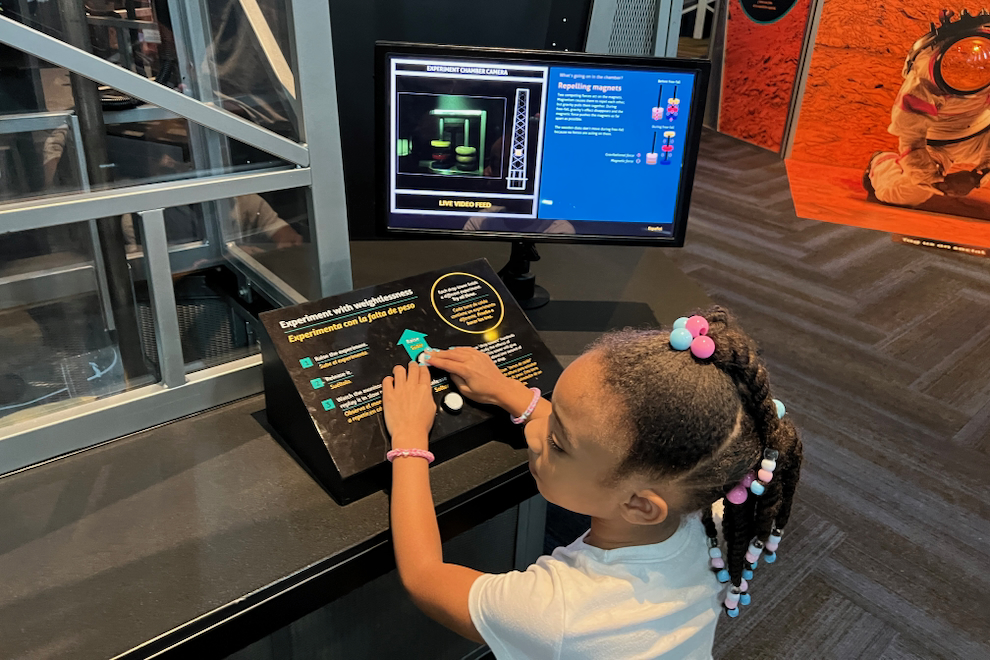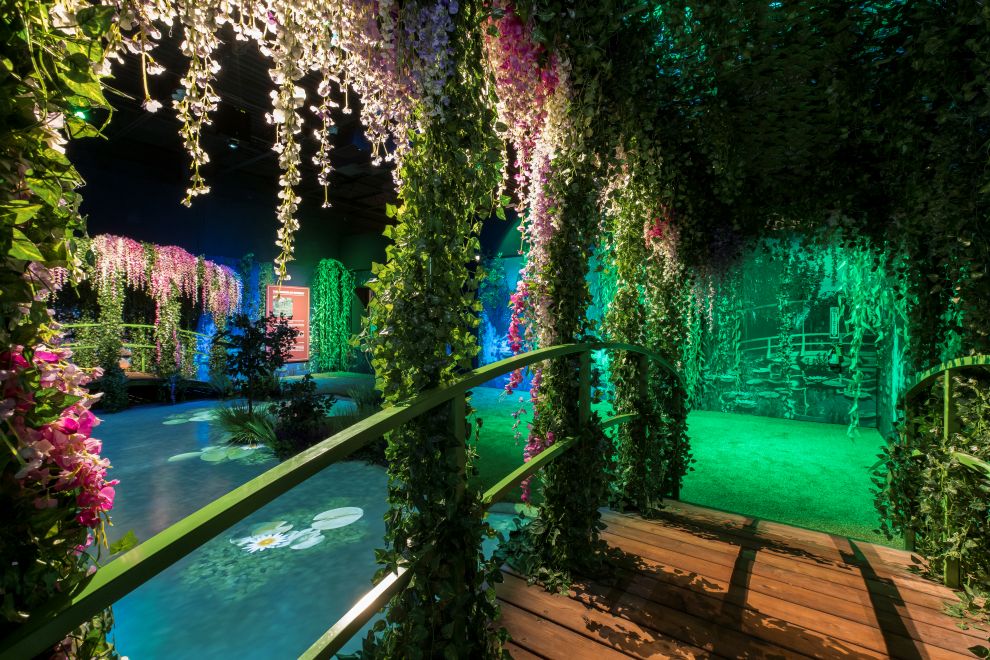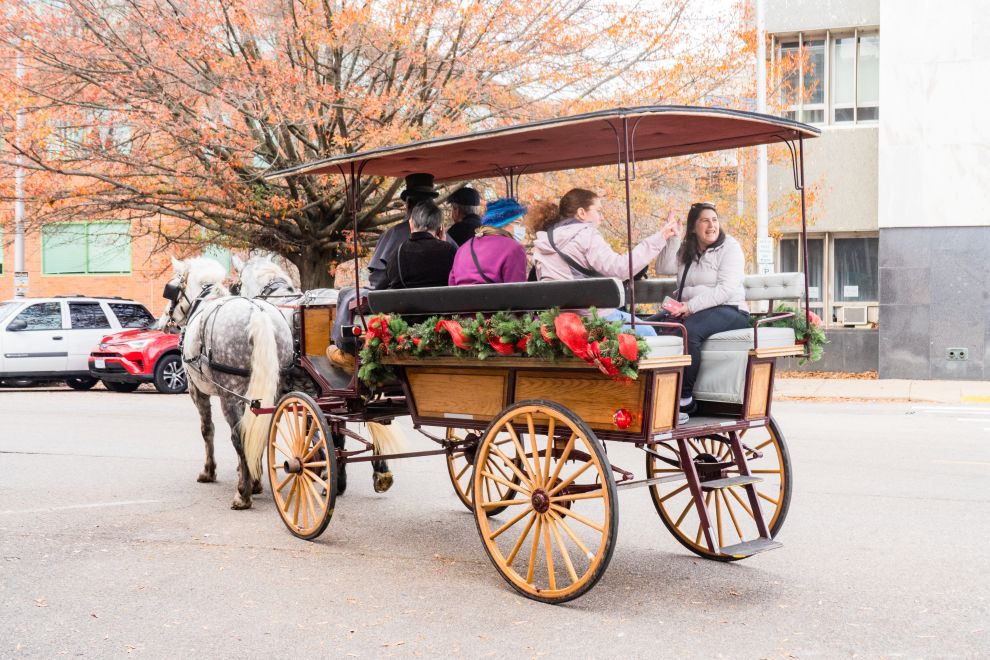Get ready for an out-of-this-world entry into Space: An Out-of-Gravity Experience, the newest exhibition at the Science Museum of Virginia. The exhibition explores and illustrates various concepts of space, life as an astronaut, and what life could look like for us regular folks in space.
I took a trip opening weekend with my younger daughter, five, and my husband. When we first entered the room one of the first stations happened to be about meteorites, which my daughter had recently asked me about. It was great to start the visit like this with a connection back to conversation we were already having at home.
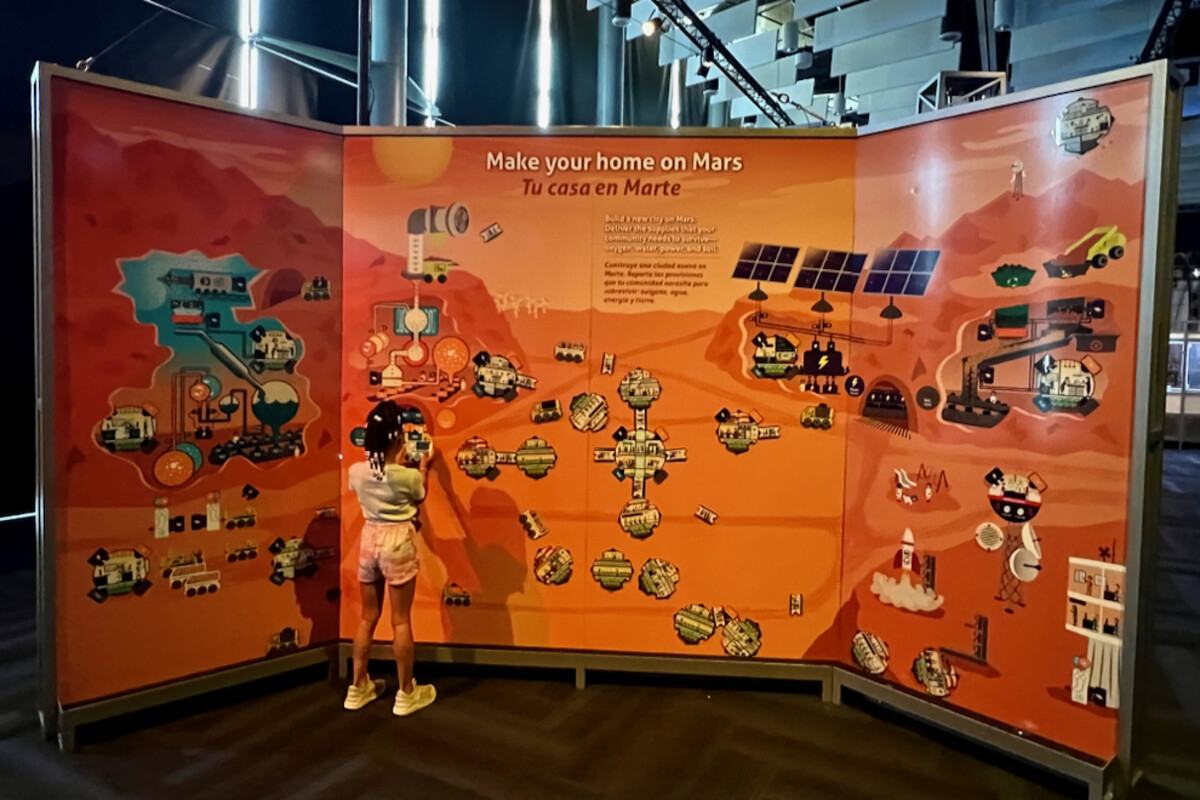
We spent time at this station exploring the various sizes meteorites can be and the damage they can cause – which can be a lot! – as we learned at the meteorite impact station. The station allows you to simulate an impact from a meteorite at varying speeds, which mimics the scientific method for understanding their behavior.
Learning is Cool and Relatable
Next we took a look at all of the layers and materials of a spacesuit and what function they serve protecting astronauts when they are in space. I don’t recall seeing how much a space suit weighs but I could guess by the number of layers involved they are pretty hefty.
Another item that clued us into how bulky a space suit can be is the Trying Working In a Space Glove station that allowed you to put your hand inside of an astronaut glove and attempt to stack blocks. First off the glove is pretty rigid and bulky, but what the station does is allow you to try picking up blocks with earth’s gravity and the gravity and pressure in. I’m sticking with earth.
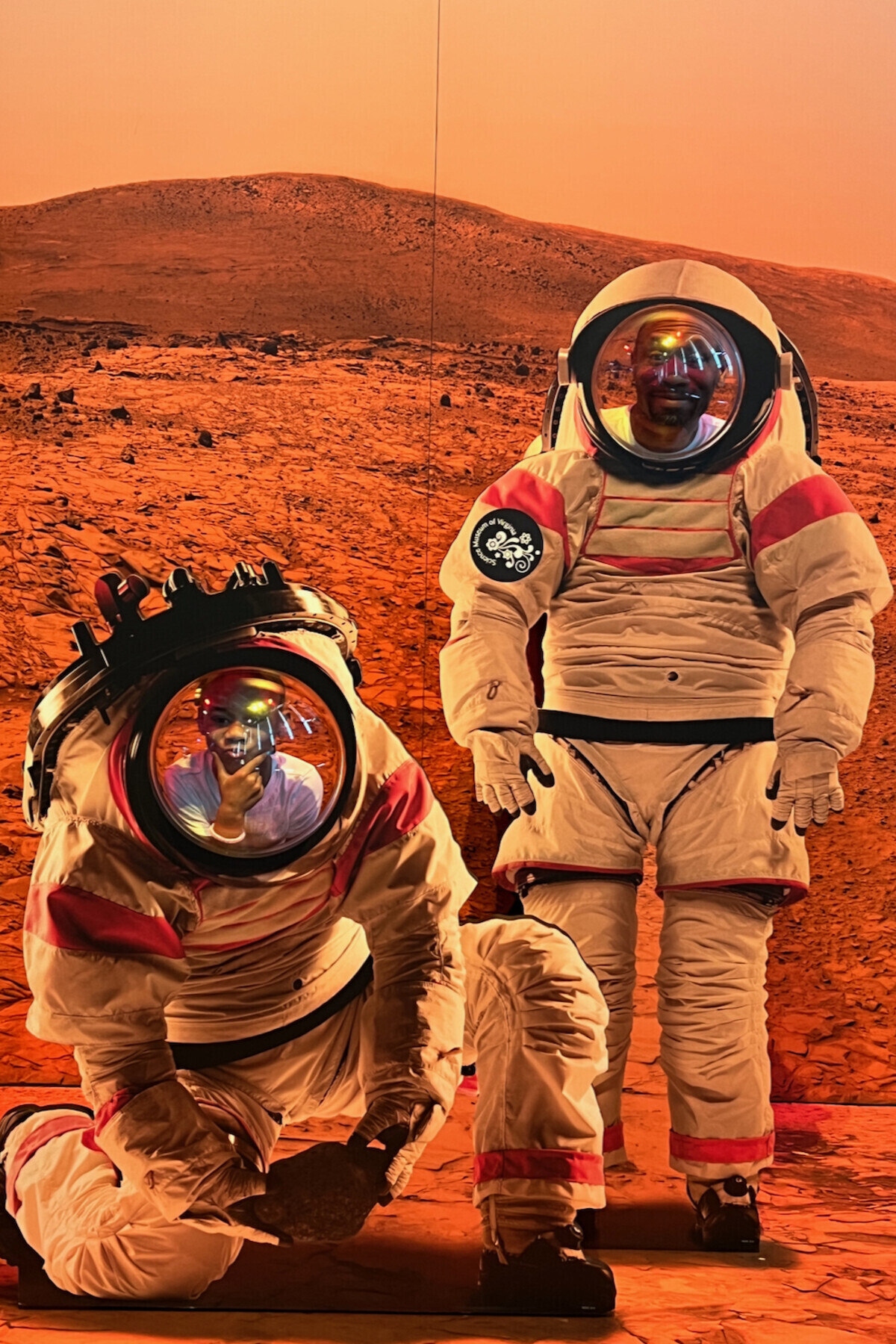
Almost every station is an interactive station showcasing various concepts of space. A few of my other favorites were, Things Sound Different in a Vacuum – exploring how sound travels under different pressure conditions and Launch a Rocket, which illustrates how the right balance of components (air and water) needed to successfully create the right circumstances to launch the rocket.
Life in Space at the Science Museum
The exhibition includes a scale model of a space station complete with soft astronaut dolls for the youngest of visitors to play and experience the different parts of a space station.
If you want to get a true experience of astronaut life, step into the Destiny Lab; a full-size orbiting mock-up of the International Space Station’s U.S. Destiny lab module to simulate what an astronaut might feel in their first couple of days in space. I will say I did not experience this because it comes with a warning around motion sickness, and if you’ve read my previous reviews you know I struggle with that at times. I wasn’t feeling my best that day to try it and my daughter didn’t want to go in either.My husband took one for the team and went in, and described it as slightly disorienting, but not too bad. I plan to go back another day to give it a try.
While my husband was in line (there will be a line on the weekend) for the Destiny Lab, my daughter and I ventured over to probably her favorite station in the exhibition. It challenges visitors to take control of the power supply of the ship, which is an interesting process of switching between solar power while the ship orbits closest to the sun and battery power once the ship has orbited away from the sun. Be warned if you don’t charge your batteries enough or shutoff the appropriate system to conserve energy you will not be happy with the outcome.
I think we could have spent hours at the station working through the timing and variables to keep the ship going.

Help Your Kids Fall in Love with Science
The final sections of Gravity include a robotic arm that can pick up a ball and drop it into a target hole, what happens to falling objects in a weightless environment, the effects of gravity on magnets and what creating our own space compound could look like on Mars. All interactive stations that for me refreshed my love of science and reminded me how fun and important hands-on learning is for kids and adults.
Space: An Out-of-Gravity Experience, located in the Dewey Gottwald Center at Science Museum of Virginia, is a ticketed exhibition which runs through September 4. The Science Museum is open seven days a week, 9:30 a.m. to 5 p.m. For tickets and complete admission information, visit summerofspace.com.


